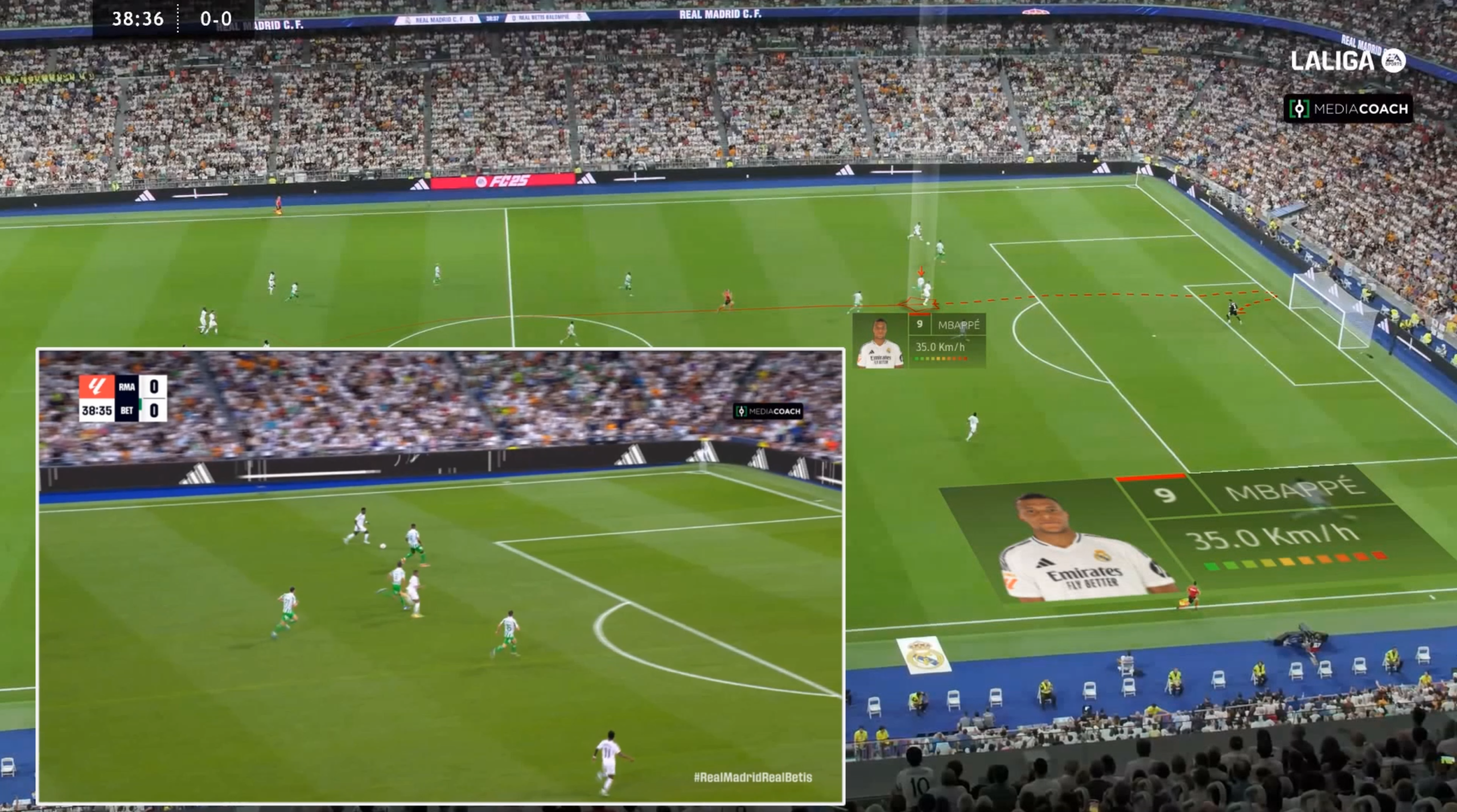
10 Ene LALIGA EA Sports: The League That Redefines the Physical Limits of World Football
In professional football, every split second matters, and players’ physical performance on the pitch can make the difference between winning and losing. A recent study conducted over four consecutive seasons (2019/20 to 2022/23) in Spain’s top two professional football leagues (LaLiga EA Sports and LaLiga Hypermotion), available at https://www.mdpi.com/2411-5142/10/1/27, in collaboration with the University of Extremadura and LaLiga’s Football Intelligence & Sports Performance Area, has revealed how physical performance has evolved in matches and what this means for coaches.
Key Findings: What Has Changed in Football?
The combined research covering eight consecutive seasons (2015/16 to 2022/23) in LaLiga EA Sports, including a previous study available at https://doi.org/10.3390/ijerph18031133, shows a significant evolution in teams’ physical performance. Over these eight seasons, teams have consistently increased their high-intensity actions, such as high-speed runs and sprints, reflecting exceptional work by physical trainers to keep players performing at the highest competitive level.
Although the Premier League is known for its intensity, reports like those from the CIES Football Observatory suggest that LaLiga EA Sports leads in several high-intensity physical performance metrics, reinforcing its position as one of the most demanding leagues. For example, during the 2020/21 season, LALIGA players averaged 803.9 meters covered at high intensity per match, surpassing the Premier League’s 790.1 meters. Additionally, in terms of total distance covered, LALIGA led with an average of 103.7 km per match, compared to the Premier League’s 100.8 km. More details can be found in the CIES report, which is available at https://football-observatory.com/IMG/sites/mr/mr68/en/.
1. Higher Physical Demand in the First Division
Teams in the First Division cover greater total distances and perform more high-intensity efforts (high-speed runs and sprints) than those in the Second Division. Specifically, significant increases were observed in the following metrics:
- Total distance covered: An average of 109,347 meters in the First Division compared to 108,839 meters in the Second Division.
- High-speed runs (>21 km/h): 6,318 meters in the First Division compared to 5,972 meters in the Second Division.
- Sprints (>24 km/h): 3,159 meters in the First Division compared to 2,931 meters in the Second Division.
2. Progressive Increase in Physical Performance
Between the 2019/20 and 2022/23 seasons, both the First and Second Divisions recorded a general increase in physical performance, with a more pronounced rise during the 2021/22 and 2022/23 seasons, indicating a gradual upward trend. The 2021/22 and 2022/23 seasons stood out for the highest recorded values, particularly in metrics such as total distance covered, high-speed runs (>21 km/h), and sprints (>24 km/h), significantly surpassing the 2019/20 and 2020/21 seasons.
3. Greater Intensity in Second Halves
Unlike previous studies, this research found that in both divisions, physical performance increased during the second halves of matches. This could be attributed to improved physical preparation of players and the introduction of five substitutions per match since the 2019/20 season, allowing teams to maintain a high level of intensity until the end of the game.
Reference Table: LaLiga EA Sports Physical Performance Comparison
Below is a reference table that allows physical trainers from other leagues to understand the maximum values observed in LaLiga EA Sports over eight consecutive seasons. The data reflects the highest average value per match and per team during a complete season, facilitating direct comparison with teams from different leagues. It is important to note that these values represent the highest levels achieved in a season based on the average of participating teams, not the maximum of a single team.
| Variable | Maximum Average Value per Match and Team in LaLiga |
|---|---|
| Total distance covered (m) | 114,200 |
| High-speed runs (>21 km/h) (m) | 6,800 |
| Sprints (>24 km/h) (m) | 3,400 |
| Number of sprints (>24 km/h) | 175 |
| High-intensity distance per match (m) | 850 |
These data highlight the importance of the work done by the physical trainers of LALIGA teams to keep players performing at the highest competitive level.
Implications for Training: How Can Coaches Apply These Findings?
- Adapting Training Load Given the increase in physical demands during matches, coaches should plan training sessions that include more high-intensity exercises. Small-sided games and transition drills can be useful to simulate the physical demands of real matches.
- Monitoring Performance During Matches It is crucial to closely monitor players’ physical performance in real-time during matches. Tools like Mediacoach Live Pro can be very helpful in identifying moments when a player is reaching their physical limit and making data-driven technical decisions.
- Specific Preparation for Second Halves Since intensity increases in the second halves, it is advisable to prepare players to perform at their best after halftime. This may include specific high-intensity work at the end of training sessions and effective recovery strategies.
- Strategic Use of Substitutions The ability to make five substitutions allows coaches to introduce fresh players who can maintain the team’s pace and intensity. Planning these substitutions intelligently can make a difference in the final minutes of the match.
Conclusions
The sustained evolution of physical performance in LALIGA EA Sports over eight consecutive seasons demonstrates the high level of demand that characterizes this competition. This constant growth in physical demands reflects the excellent work of physical trainers, who have adapted their methodologies to maximize players’ performance in an increasingly competitive environment.
These findings are also crucial when planning the recruitment of new players from other leagues. The ability to adapt to the high physical demands of LaLiga EA Sports should be a key factor in the talent selection process, ensuring that incoming players can perform at the highest level and contribute to the team’s success.
Modern football is becoming increasingly demanding from a physical standpoint. Coaches must be prepared to meet these demands by adapting their training plans and match strategies. This research provides a data-driven guide that can help football professionals optimize their teams’ performance.


